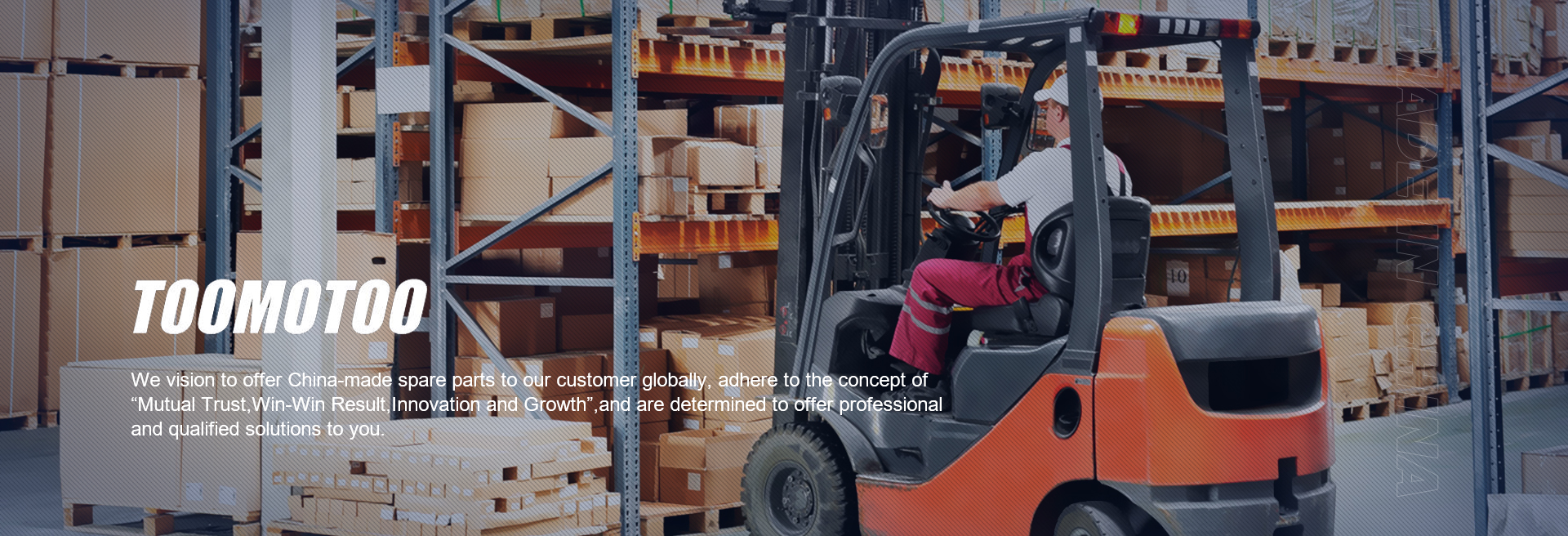
Time: 2023-12-01
Source: TOOMOTOO
Author: TOOMOTOO
Click: 345 times
The risk level of forklifts is level 5, from low to high, they are A1 (cautious type), A2 (stable type), A3 (balanced type), A4 (aggressive type), and A5 (aggressive type).

Basic risk conditions for forklifts:
1. The examination for the forklift certificate for special equipment operators requires the age of 18 or above;
2. Having good physical health and meeting the special requirements for the type of forklift operation applied for;
3. Have a cultural level that is suitable for the type of special equipment operation for applying for a forklift certificate;
4. Have work experience that is suitable for the type of special equipment operation for applying for a forklift certificate.
Forklifts, as non manual handling tools for storing goods, are widely used in various workshops, transportation hubs, transfer centers, etc. Due to the large carrying capacity of forklift operations, it is necessary to pay attention to the following operational risks and master solutions.

Operational risk 1:
When the load on the forklift is too heavy, it can cause the rear of the vehicle to tilt up. At this time, personnel are asked to stand at one end of the forklift and use their weight as a counterweight. As a result, when lifting the goods, the rear of the vehicle suddenly tilts up, causing injuries to personnel.
The possible cause of this accident is that the forklift is overloaded or there are no protective measures in place for personnel standing. To avoid such accidents, safety education for forklift operators should be strengthened, and it is strictly prohibited for anyone other than the operator to ride or stand on the forklift. And according to regulations, overloading is not allowed.
Operational risk 2:
Overloading during forklift handling operations, unbalanced shaking of loading and unloading items, and accidental falling of goods causing injury to people. The possible reason is that during operation, the forklift lifts the load too quickly or the speed during transportation exceeds the regulations. In this case, sudden braking and avoidance may cause the goods on the vehicle to fall off.
It is also possible that the goods were not tightly tied to the vehicle body as required, or the loaded goods did not match the forklift arm device, which caused the goods to fall off the fork frame. For this risk, the following points can be fully addressed or avoided as much as possible: when operating a forklift, strive for stability. Arrange the goods neatly and tie them tightly with the forks before transportation.
When driving, avoid sudden braking and turning. Timely level the road surface for bumpy driving. At the same time, it is necessary to follow the relevant procedures and not overload the loading and unloading of goods.

Operational risk 3:
Collision accidents caused by obstructed vision or poor habits of the driver when the forklift is reversing. The possible reason is that the reverse mirror and reverse warning sound on the car were not installed according to regulations or the malfunction was not repaired.
It is also possible that the driver did not sound the horn to remind the surrounding personnel when reversing. Therefore, for vehicle mounted reverse warning components, they should be installed and repaired in a timely manner, while cultivating safe reverse habits for drivers.
Operational risk 4:
When the forklift is driving, it may overturn on the side and cause damage to personnel and equipment. The reason may be that the forklift is driving diagonally or turning on a slope when loaded. Or the forklift turning speed is too fast. Therefore, drivers are required to drive at low speeds, avoid forklift operations on soft ground, and avoid sudden turns and brakes when loaded.
<< Previous page
Next page >>
LINKS:
Harber Metal